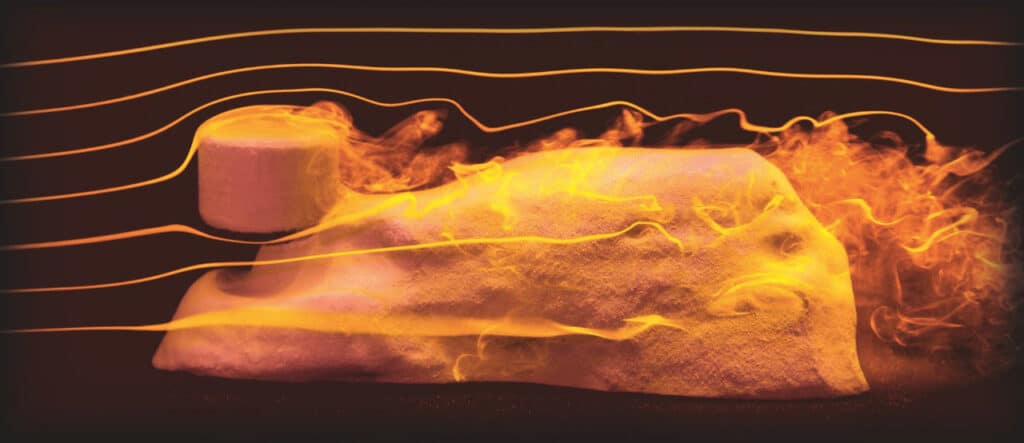The Great Sphinx of Giza is one of the world’s oldest works of monumental sculpture.
Historians and archaeologists have never been able to understand the Great Sphinx of Giza fully. Its initial appearance, its intended meaning, and its original name are only a few of the many issues that have been raised about it. But an important subject that has yet to get much attention is what the Sphinx’s natural environs were like when it was constructed.
To respond, a group of experts from New York University simulated the environmental conditions of 4,500 years ago to demonstrate how wind could have molded the well-known statue.
The study offers a possible ‘origin story’ for how Sphinx-like formations can emerge from erosion.
Leif Ristroph, an associate professor at New York University’s Courant Institute of Mathematical Sciences and the senior author of the study, said, “Our laboratory experiments showed that surprisingly Sphinx-like shapes can come from materials being eroded by fast flows.”
The main focus of the project was to recreate yardangs, which are strange rock formations in deserts caused by wind-blown sand and dust. It also investigated the possibility that the Great Sphinx began as a yardang and was later sculpted by humans to become the famous statue.

Ristroph and his associates at NYU’s Applied Mathematics Laboratory achieved this by taking mounds of soft clay and inserting firmer, less erodible material inside of them, simulating the topography in northeastern Egypt, the location of the Great Sphinx.
After that, to mimic wind, they pounded these formations with a swift-moving stream of water, which sculpted and deformed them until they reached a building like a sphinx. Several other characteristics, including an undercut “neck,” “paws” spread out in front on the ground, and an arched “back,” formed from the more complex or more resilient substance that became the lion’s “head.”
Ristroph said, “Our results provide a simple origin theory for how Sphinx-like formations can emerge from erosion. There are, in fact, yardangs in existence today that look like seated or lying animals, lending support to our conclusions.”
“There are, in fact, yardangs in existence today that look like seated or lying animals, lending support to our conclusions. The unexpected shapes come from how the flows are diverted around the harder or less-erodible parts.”
Journal Reference:
Samuel Boury, Scott Weady, and Leif Ristroph. Sculpting the Sphinx. Physical Review Fluids. (link)
>>> Read full article>>>
Copyright for syndicated content belongs to the linked Source : Tech Explorist – https://www.techexplorist.com/mystery-origin-great-sphinx-giza-solved/76988/#utm_source=rss&utm_medium=rss&utm_campaign=mystery-origin-great-sphinx-giza-solved






























